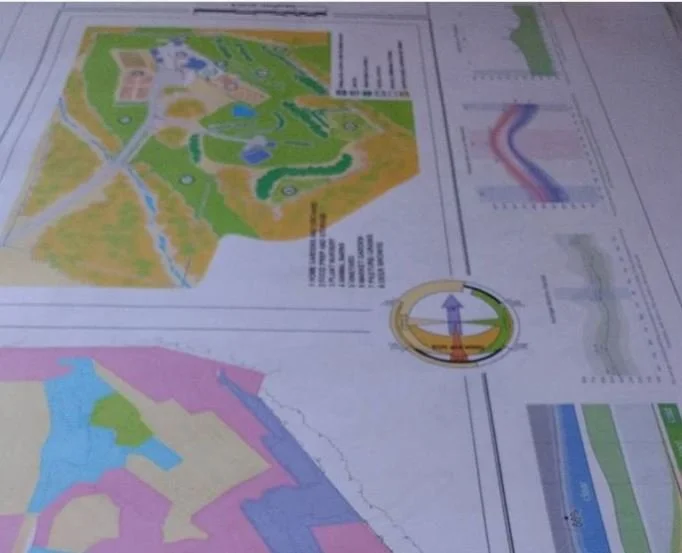Budgeting a Landscape Project
Our Insider’s Guide to Smart Budgeting and Planning
Planning a landscape project can feel overwhelming, and planning expenses around that project can be one of the most difficult things to do, especially if it’s your first time. This is far and away the biggest up-front challenge contractors and clients have to deal with, but it has to be dealt with before any progress can be made — not because you have to spend every dollar, but because it helps your contractors like us guide you toward the best-fit solutions. Every site has a range of possibilities, and understanding what you’re comfortable investing allows us to design something that matches your vision and your wallet. Here’s a simple way to start thinking through your project — like a savvy homeowner — before diving into design and planning.
“When we’re designing a landscape that supports both people and the planet — one that grows food, supports wildlife, and uses resources wisely — it’s even more important to prioritize wisely when budget is a concern. Here’s how I recommend approaching it so you get the most long-term value, both in harvest and in health of the land.”
1. Start with the Health of the Land
Before planting anything, we need to understand and care for the land itself. Our Comprehensive Site Report (pictured) helps us gain a more complete understanding of where the water flows, where the sun hits, and how the soil is doing. If we get water movement and soil health right from the beginning, everything else grows better — with less effort and expense down the road!
If your site has drainage issues, poor soil, or compacted areas, those are things to address early. Compost, mulch, and thoughtful grading might not be the most “exciting” investments, but they lay the groundwork for everything that follows. Healthy soil and water-smart design let us grow food and habitat more easily, and save water in the process.
2. Plant What Takes Time to Grow First
Start with the plants that will take the longest to mature — especially trees and large shrubs. Fruit trees, nut trees, and even native canopy trees that offer shade and habitat are slow to get established, so we want to give them a head start.
Likewise, longer-lived food plants like berry bushes, asparagus, or rhubarb benefit from early planting, even if the harvest is a couple years out. These are the backbone of your edible landscape, and once they’re in place, we can fill in with faster crops year by year.
3. Prioritize the Places You'll Use and Enjoy
Think about the parts of your yard you walk through or spend time in every day — maybe it’s just the front walkway, or maybe it’s a back patio near the kitchen. These are the areas where you’ll most appreciate changes right away.
If your goal is to grow food, we might focus on one manageable zone for vegetables and herbs — ideally close to the house for easy tending and harvesting. A small, well-designed garden you actually use is worth more than a big one that gets away from you.
4. Build the Vision in Stages
It’s smart to have a full-site plan from the beginning, even if we build it in pieces over time. That way, you don’t waste money putting in a garden bed or path that has to be moved later.
We can phase the project like this:
Year 1: soil building, trees and shrubs, one active garden bed
Year 2: pathways, fences, compost station, more planting
Year 3: outdoor gathering area, rainwater system, expansion of food beds or pollinator meadow
This approach lets your landscape grow with you — as your budget, skills, and enthusiasm grow, too.
5. Choose Materials and Plants that Work with Nature, Not Against It
Whenever possible, we use what the site already offers. That might mean finding a warm south-facing wall for a tender fruit tree, mulching with leaves, or choosing native plants that already know how to thrive here without extra watering or care.
It also means avoiding expensive inputs like chemical fertilizers or constant irrigation — instead, we set things up so that plants support each other and create their own kind of balance over time.
A simple herb spiral or native flower strip can offer beauty, food, and habitat all at once — and won’t require constant maintenance or replacement.
Now its up to you:
Use this handy chart as a “rough cost” estimator to get an idea what each component of your project might cost. It might be worth adding 10-20% to that initial estimate for “blind” estimating, then tell your contractor that number, plus another 5-15% emergency contingency, depending upon the complexity of the project. While this estimator may be incomplete and not represent every contractor’s minimums/ trip charges (those should be expected), it will help to create realistic expectations when we have those first conversations about your project.
Thoughtful landscape design and expert construction may have a higher up-front cost, but that investment pays a return year over year, as the designed space offers beauty, habitat, and food for the human and non-human users of the ecosystem, and a planned phased approach to a project can protect you from having to move or re-do work. It also means avoiding expensive inputs like chemical fertilizers or constant irrigation — instead, we set things up so that plants support each other and create their own kind of balance over time.“A thoughtful, nature-friendly landscape doesn’t have to happen all at once — and it shouldn’t. Starting with the essentials, choosing the right plants, and building in manageable stages lets you create a space that will feed you, support pollinators, and become more resilient every year. That’s a lasting return on your investment.”



